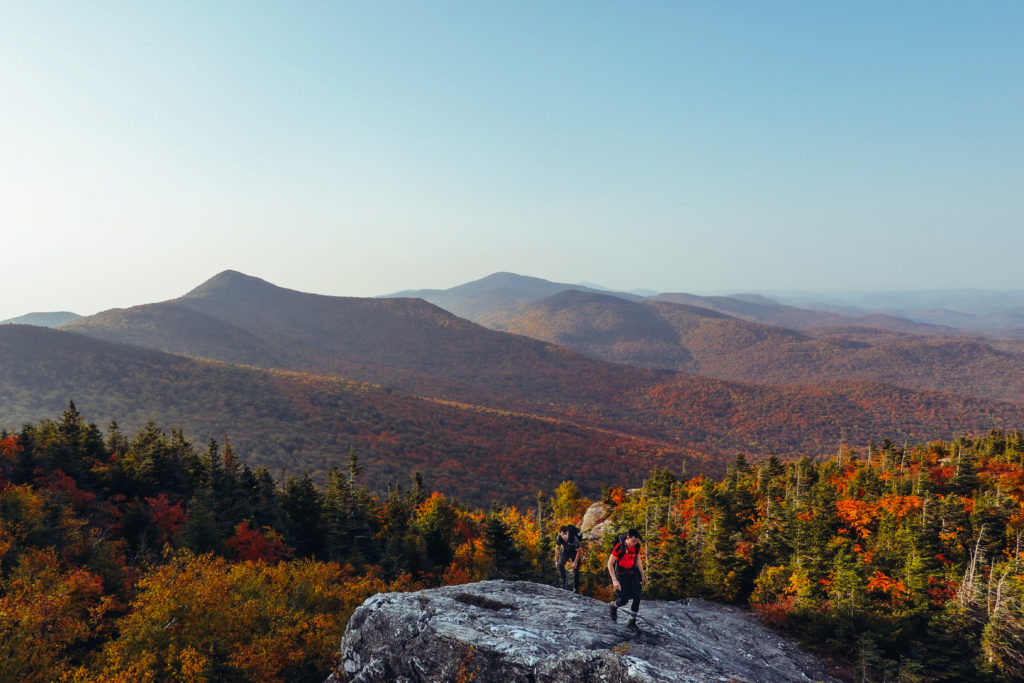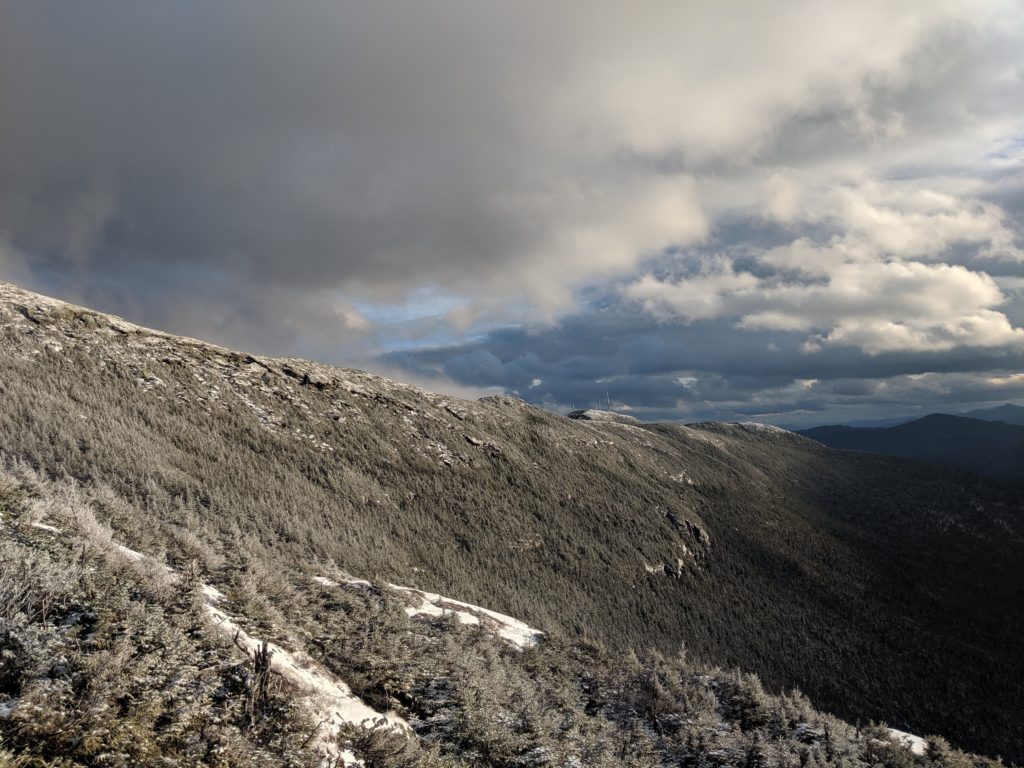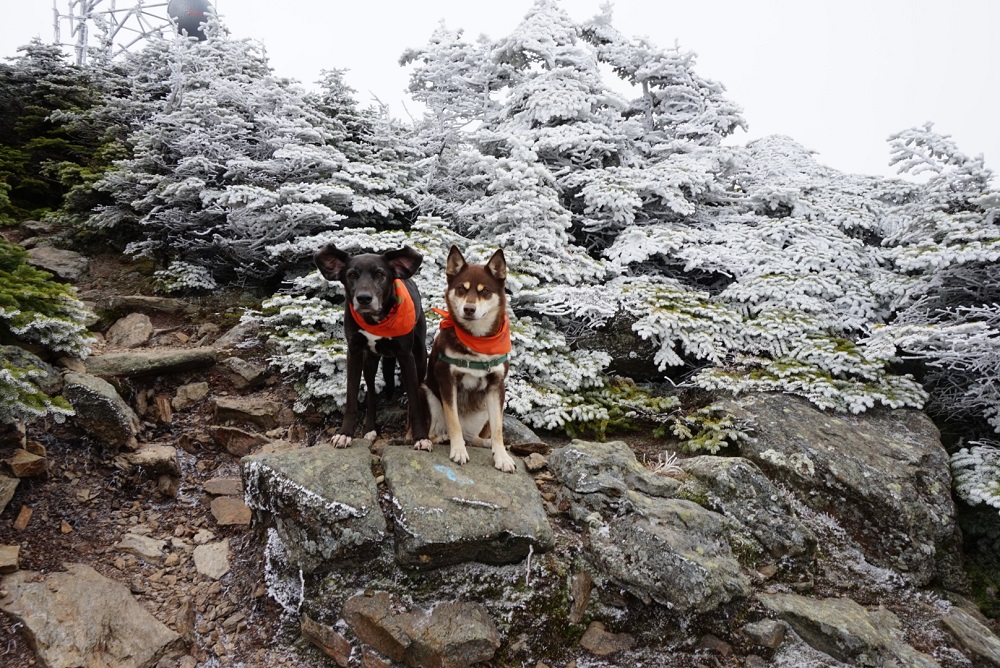
There are several advantages to planning your Long Trail thru-hike, or end-to-ender, for autumn. The temperatures are more comfortable, the views are clearer and less hazy, and there are fewer black flies and mosquitoes. You’ll also likely miss the remaining crowd of Appalachian Trail thru-hikers, as they’ve moved into New Hampshire and Maine already. And let’s not forget Vermont’s seasonal attraction: prime leaf peeping.
Despite all the benefits of backpacking during the fall season, there are some considerations to plan for to make the most of your end-to-end adventure.
Autumn Weather

September and October usually sport 60-degree (F) daytime highs, which is glorious for hiking. But nighttime temperatures can dip into the 30s, which is downright cold. Sunshine, rain, snow, and mud are all common during Vermont’s fall season; you might even see all these elements in a 24-hour period. Having appropriate gear and clothing is important to keep you safe and comfortable.
Layering Essentials
Wool or synthetic layers are crucial to keeping you comfortable and dry during fall’s inevitable weather variations.
- Base Layers: Pack a set of long underwear and socks for sleeping. Keep this set dry from rain and sweat, so that it’ll keep you warm and comfortable while you sleep. During the day, you’ll want a t-shirt, pants or shorts of your choice, and socks for hiking; this will be your base. Zip-off pants can be convenient when you start hiking in a chilly morning and hike into warmer afternoons.
- Mid-Layer: Any fleece, down, or wool sweater can serve as an insulating layer. This can be worn at camp, during breaks, while sleeping on colder nights, and on the more exposed summits. You should avoid wearing this layer while hiking for long periods, so it stays dry from sweat.
- Outer Layers: A raincoat can serve as both a layer to keep you dry, as well as a wind breaker to keep you warm on the colder summits. Rain pants can provide extra warmth in Vermont’s unpredictable weather.
- Accessories: A pair of dry, lightweight camp shoes are a real luxury at the end of a long hiking day. A small beanie, glove liners, a neck gaiter, and extra socks are all light-weight options that provide excellent warmth-to-weight ratios.
Gear
Having the right gear is a must for a successful trip. Don’t forget these essentials for the encroaching cold and darkness:
- A 20-degree sleeping bag is usually sufficient, especially if you wear all your layers on those colder nights. If buying a warmer bag isn’t in your budget, try the more economical option of a mummy liner for the bag you already have.
- Shorter daylight hours will translate to more headlamp usage. The colder temps will drain its batteries more quickly, so remember to bring backup batteries or plan for backups when resupplying.
- Hot beverages — like instant coffee, tea, or cider — can help ease you out of your sleeping bag on a cold morning. Don’t forget to pack extra stove fuel, as you may be preparing hot meals more often than you do during summer overnights.
- Bears and other animals are still active in the fall, especially as they prepare for winter. Make sure you not only have proper food storage — such as a bear canister, an Ursack, or food hang — but also know how to use it.
Southbound or Northbound?
Hiking in the right direction is important for a good start. You’ll want consider terrain and weather conditions alongside your timing. Summer thru-hikers typically go northbound on the Long Trail, which gives them time to build their hiking legs before reaching the more difficult northern terrain. If you’re starting in mid- to late-September, however, you’ll have the weather to contend with.
To head northbound during the fall means you’ll hit the state’s northern region in early October, when it’s colder and snow-prone. A southbound start allows you to enjoy the milder temperatures and weather in the north (before it gets too cold), and you will follow that trend as you make your way toward the Southern Terminal. If you have been hiking regularly all summer, your hiking legs shouldn’t be an issue!
Safety

Leaf litter, shorter daylight hours, ice, and hunting season need to be taken into consideration when hiking in the fall. Here’s what you need to know:
- Autumn signals hunting season, so remember blaze orange accessories no matter the extent of your hike. More tips for hunting season.
- You may encounter ice and snow, especially at higher elevations. Pack extra traction, such as MicroSpikes, to safely walk up and down the trail.
- Fallen leaves can hide ankle-twisting hazards, like roots and rocks. They can also make a trail slippery. Consider hiking poles, and try to keep three points of contact to avoid falls as you move across the terrain.
- Autumn rainstorms can saturate trails and raise water levels at river crossings. Stay on trail; a map and compass are especially handy as the foliage turns and the terrain seems unfamiliar. If you need to ford a river, unclip your pack, keep your shoes on, and face upstream.
- Find more safety tips for autumn here.
Whether you are thru-hiking or section hiking, a trip on the Long Trail is an unforgettable experience. Whatever season you choose to go in, being prepared with the proper gear, clothing, and know-how can make the whole experience even more enjoyable.
Have any questions or need trip planning advice? Don’t hesitate to contact the experts at the GMC Visitor Center: [email protected].



















Hello is there a shuttle to use in the area. I’m looking to do the Long Trail in sections and would not have two cars. Please advise. Thank you
Hi, Please email [email protected] to get a copy of our list of shuttles, taxis, etc.!